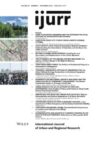In this article we apply Wacquant’s conceptualization of the ghetto to an analysis of interviews conducted with Roma people living in the state-enforced camps of Turin, Italy. We illustrate how the elements characterizing a ghetto according to Wacquant (i.e. forcible relegation, ethnic homogeneity, mutual distancing and parallel institutionalism) decline in the reality of Italian camps. Interpreting the data we collected, we confirm the important heuristic capacity of Wacquant’s model; however, we also argue for the need to revise and extend it. The results demonstrate that the Roma camp is not simply an urban area of spatial confinement and marginalization. Above all, it is a place of symbolic ghettoization. Indeed, in a Roma camp dispositional habitus are produced and cemented, the effects of which surpass their own spatio–temporal boundaries. Furthermore, the Roma camp is a Janus-faced institution, mixing social isolation with the positive aspects of emerging collective solidarity. Finally, we suggest that the importance of ghettoization to the heterodefinition of stigmatized groups is significantly greater than the criterion of ethnic homogeneity proposed by Wacquant.
Details
Written by:
Vincenzo Romania, Tommaso Bertazzo
Digital Object Identifier (DOI)
https://doi.org/10.1111/1468-2427.70009
About DOI
